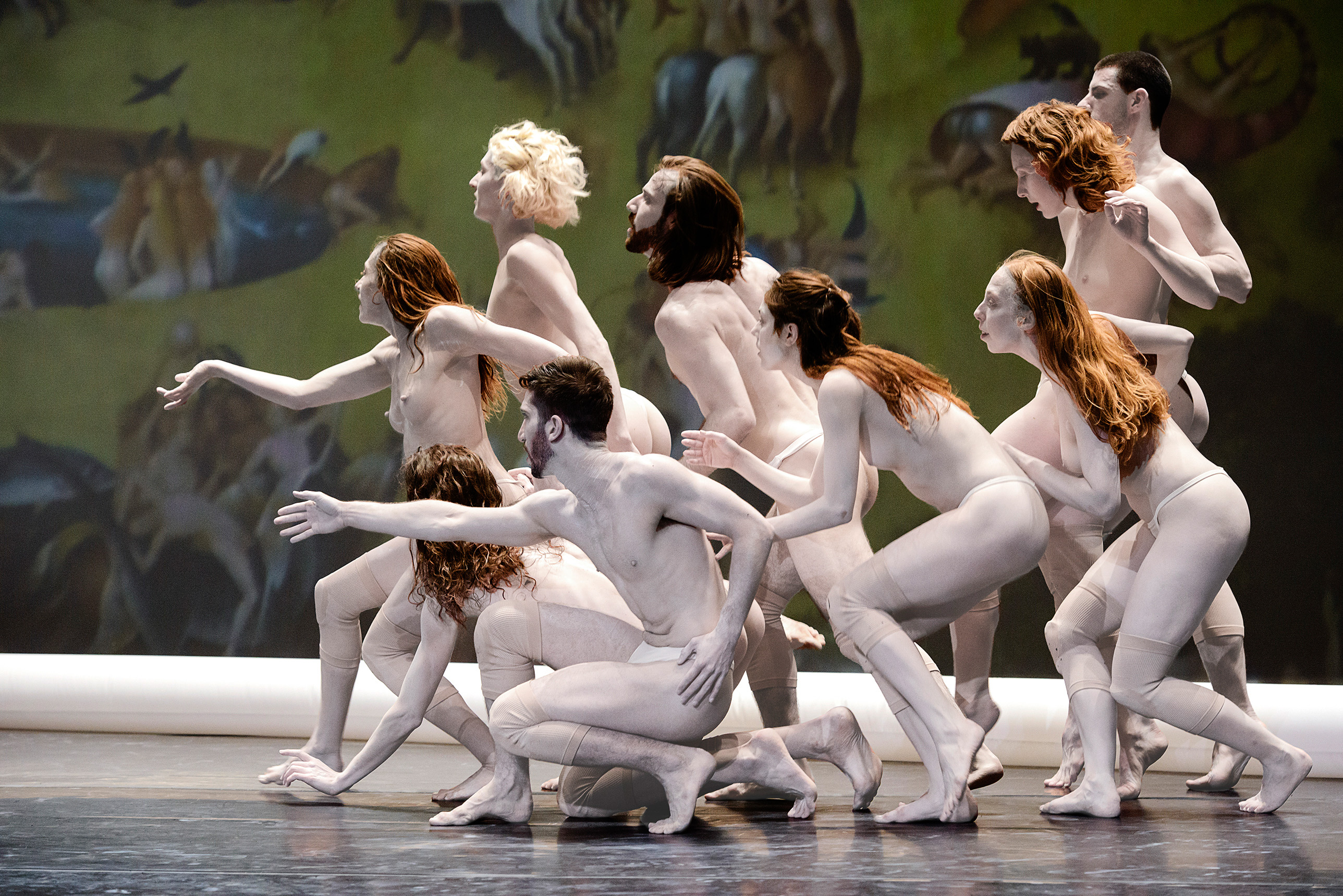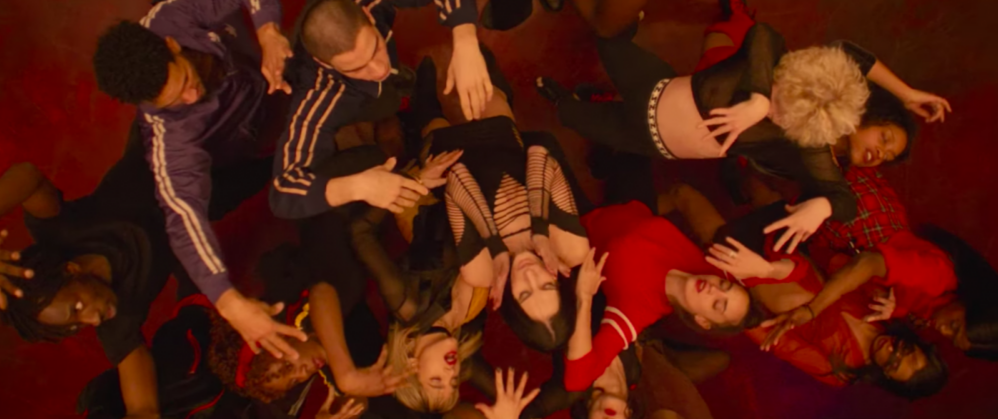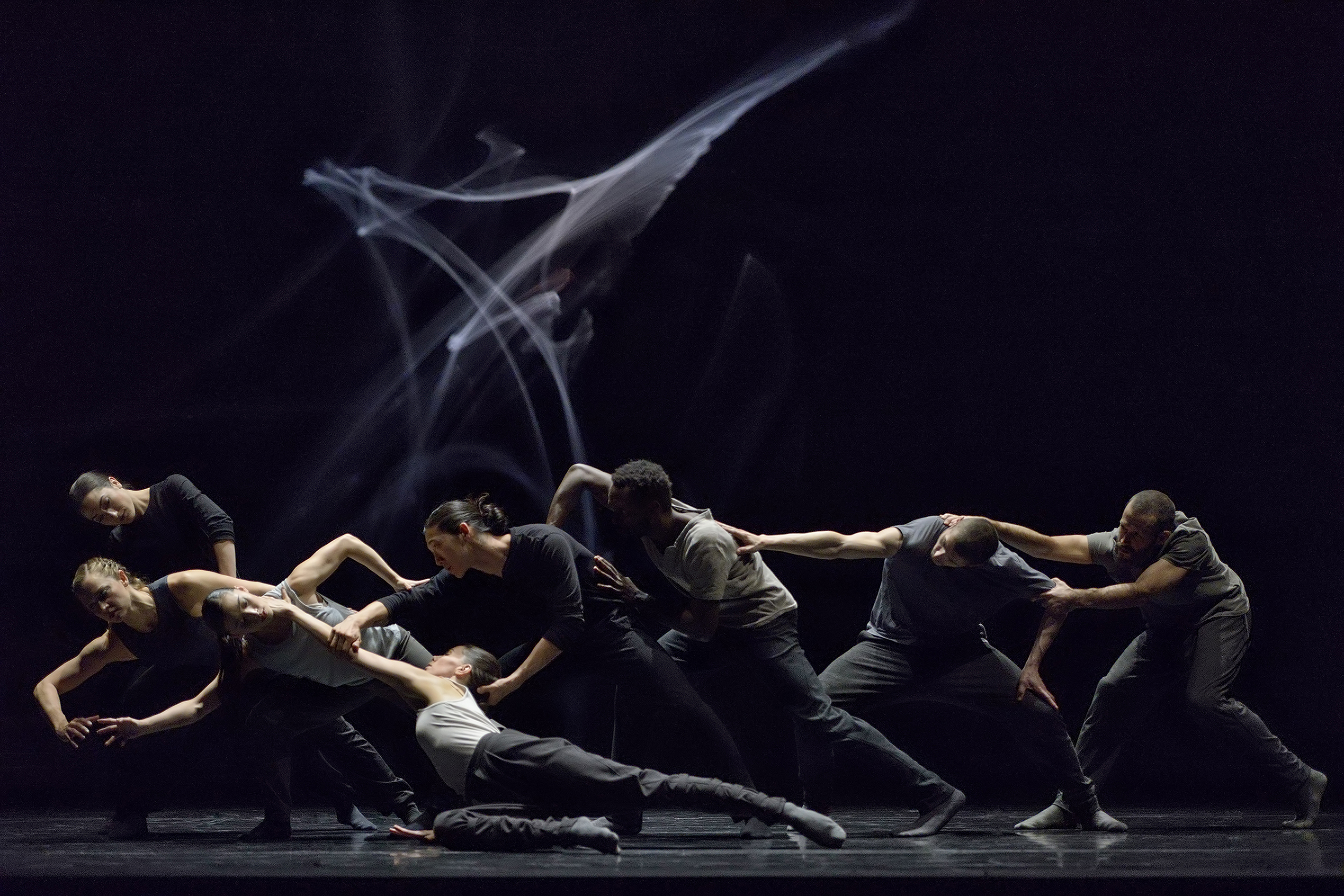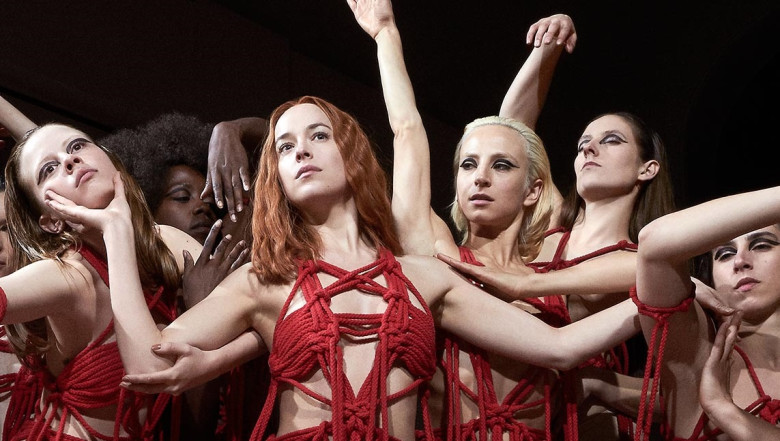Years ago, I had a job working for a choreographer in Vancouver. One afternoon, she took me out for a coffee and told me that every time she looked at me, she saw flames shooting out of either side of my head.
There was long a moment of silence.
“You mean… like the devil?” I asked finally, not certain whether I should be checking the premises for a fire extinguisher or telling her that I would be looking for a new job.
She moved on to other topics, and nothing came of it — except an affirmation that dance makes bodies move to the whims of some very odd minds.
Consider, for example, enfant terrible filmmaker Gaspar Noé, who is almost undone by choreographic insanity in his new film Climax.
Noé is no stranger to excess, and in Climax he let loose a firehose of rising action that begins with a troupe of contemporary dancers drinking sangria spiked with LSD and ends in bloody horror. Along the way, there are a number of bravura dance sequences that are part porno-hump, part street dance battle. What is most curious about the film is where the truly frightening stuff emerges.
Turns out that carefully choreographed horror is infinitely more terrifying than simple violence. Ask Igor Stravinsky, whose composition for Vaslav Nijinsky’s ballet The Rite of Spring prompted rioting in the aisles in 1913. There is something about dance that does away with rationality and lets out the wild rumpus.
Years before Noé was even a gleam in his father’s eye, the directing duo of Powell and Pressburger was lacing up evil in The Red Shoes. Darren Aronofsky’s Black Swan whacked balletomanes like a sledgehammer. But when Luca Guadagnino’s remake of Suspiria came out earlier this year, I did a double take. Tilda Swinton, channeling choreographers Pina Bausch and Martha Graham leading a coven of witches in post-war Germany gave me post-traumatic flashbacks to my own brush with hair-on-fire dance madness.
Noé’s film reminded me of Canadian choreographer Marie Chouinard’s new work Hieronymus Bosch: The Garden of Earthly Delights premiering in Vancouver March 15 at the Vancouver Playhouse.

Something of a terrifying character herself, Chouinard has made work that included peeing in a bucket, strapping on a goat-horned phallus, and a little light masturbation. In Earthly Delights, the “bad girl of dance” takes inspiration from Bosch’s infamous painting. Five hundred years after the artist created his epic triptych, people are still trying to figure out what it means. Whether it’s analogy for humanity’s fall from grace, or the weirdest damn orgy ever committed to canvas, one thing is certain: It’s scary!
Chouinard and her dancers worked closely with the painting, pulling out details (bird-headed monsters, gargantuan strawberries) to fashion a performance work that both terrifies and enthralls. Curiously enough, the trio of panels in Bosch’s work, depicting sensuous activity descending into carnage and hellfire, bears a strong resemblance to the narrative arc in Noé’s film.
Noé is infamous for subjecting audiences to some the most disturbing images ever committed to cinema, but the ability of dance to channel strange forces almost overtakes the story in his film. Before long, the camera is climbing the walls and racing upside down along the ceiling, like a bat on acid. And then things go really nutso.

It all starts so well. After finishing three days of rehearsal in an abandoned schoolhouse, the performers — a polyamorous slice of French society — happily partake of sex, drugs and gossip. One moment, it’s all fun and frolic, and the next it’s Grand Guignol dance off, with performers circling and snarling. Snap, crackle, pop and lock — this isn’t gentle turning of the head a la The Exorcist, but entire bodies doing the impossible, bending and twisting into shapes that do not seem fully human.
As the company contort their way into cannibalistic tableaus that recall Goya’s Black Paintings, it’s an easy leap to full on satanic mass.
Luca Guaudagnino’s remake of Suspiria similarly writhes and slinks audiences to a place where violence lies coiled, hissing. In the film’s final scene, a coven of witches dance themselves into a frenzy, while their new leader (Dakota Johnson) splits herself open to reveal 50 shades of scarlet.
A different sort of dance into darkness takes place in Kidd Pivot’s new work Revisor, which had its world premiere in Vancouver a few weeks ago. Revisor is an impressive work — flickering, evanescent and channelling the very worst in human nature — corruption, greed, lust and fear, with polish.
Nikolai Gogol’s 1836 play The Government Inspector is the basis for Kidd Pivot’s dance/theatre hybrid; however, Revisor is not a straightforward reworking of Gogol. Rather, as the title implies, it is a revisionist evisceration of society, using words and dance. As the comic tropes of satire begin to slip and slide, something interesting happens. Dance ascends and kicks away language.
There is more eloquence in the curvature of an arm, the lift of a leg, than in all the layers of dialogue mouthed by Gogol’s fusty archetypes. In this, dance is a more effective means of transmitting harder, more brutal truth than words. All that musky, mammalian, feral stuff, the disturbing bits that civilization is trying hard to keep a lid on — dance opens up a channel and comes spurting out.

In Gaspar Noé’s Climax, the thin line between joyous release and the inferno requires only a nudge to shift from one to the other. The dancers, after failing to explain to each other what is happening, resort to wilding romps, flailing arms and legs to give expression to the horror of the situation. While the camera roils and contorts, and garish red light renders the entire place a crime scene, they pound away on each other. It’s hard to tell if they’re beating each other up or rutting like rams.
Much ink has been spilled trying to make sense of Noé’s film. Is it meant to evoke the dissolution of democratic, pluralistic French society? The wreck of liberté, égalité and fraternity into violent madness?
I think it’s more fundamental than that.
Shamanistic is the word Noé has used about himself. In Climax he unleashes his own rite of spring. The same energy that prompted Parisian audiences to go bonkers during Stravinsky’s ballet comes rising out of the murk, and some part of you wants to egg it on.
All of these different works (film and performance) share the idea of ritual, of shedding old forms, old ideas to create a pathway for something new. This process requires sacrifice, a splitting of the skin, if you will, to allow some new thing to emerge, damp and red, its sides heaving with effort.
Dance is a reminder that the physical world cannot be denied. Bodies have a truth that the mind cannot always fathom. And when some strange force induces them to move in wild ways, watching can make you feel as if flames were actually shooting from the sides of your head. ![]()
Read more: Film
















Tyee Commenting Guidelines
Comments that violate guidelines risk being deleted, and violations may result in a temporary or permanent user ban. Maintain the spirit of good conversation to stay in the discussion.
*Please note The Tyee is not a forum for spreading misinformation about COVID-19, denying its existence or minimizing its risk to public health.
Do:
Do not: